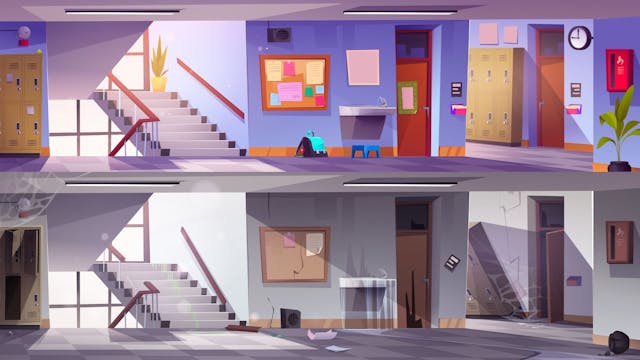WASHINGTON, D.C. — Lewis Ferebee, chancellor of District of Columbia Public Schools, stands at the top of a staircase at John Lewis Elementary when he’s approached by a couple of his constituents for handshakes. He has to reach down a bit — the third-grade boys only stand about waist-high to Ferebee.
The school got a face-lift three years ago. The renovations transformed the noisy, open-concept hallways — relics of the Open Education Movement from the ’60s and ’70s — into individual classrooms. Teachers can now talk to their students without the distracting din of chatter from other classrooms, but the garage doors that double as windows can be opened when teachers want to do activities that involve getting students from multiple classrooms working together.
The work that went into John Lewis Elementary highlights something unique about DC Public Schools. Since 2007, its Office of Public Education Facilities Modernization has kept and systematically worked through a schedule for upgrading schools. At the time, the district reportedly had a backlog of 20,000 work orders.
That level of overwhelm may sound familiar to educators at school districts nationwide who work in school buildings that are “in dire need of renovation,” as described in a recent brief from the Joint Economic Committee of Congress.
The average age of school buildings is 49 years — just shy of the end of their lifespan — according to the brief, and more than half have “never undergone any major renovations” since they were built around the time of the Vietnam War.
The Biden administration has pumped a uniquely large amount of money into school infrastructure, according to experts who spoke with EdSurge, perhaps most well-known through ESSER funds in response to the pandemic. The issue of crumbling and outdated school buildings has generally been “orphaned” at the federal level, as one expert put it.








